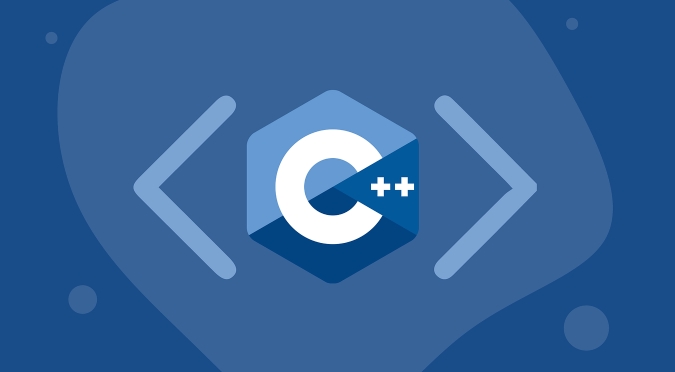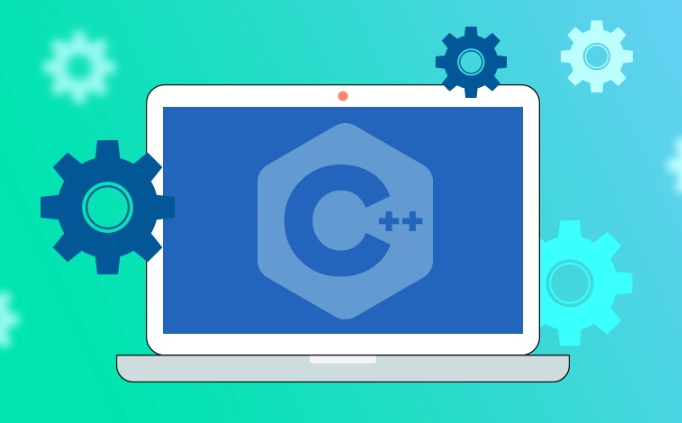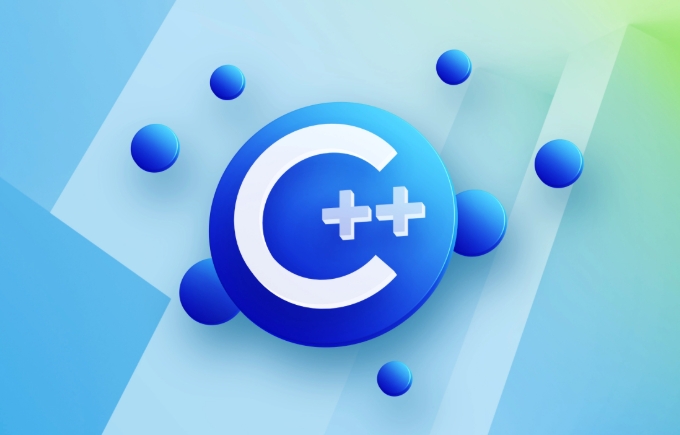Can you explain classes and objects in C with an example?
Jun 29, 2025 am 12:54 AMIn C, a class is a user-defined data type, containing data and functions, and an object is an instance of a class. Classes are like blueprints, which define the structure and behavior of objects. For example, class Car defines the brand, model, year and method of starting the engine; objects are specific examples created based on the blueprint, such as myCar and yourCar represent different car objects and have their own data copies. Using classes and objects can improve the organization, reusability, abstraction and maintainability of the code, and is suitable for scenarios such as player character modeling in game development. In addition, the access modifier controls member access rights, the constructor is used to initialize objects, and the class also supports inheritance to build a hierarchy.

Sure! Let's break it down simply. In C , a class is like a blueprint, and an object is what you build from that blueprint. If you're new to object-oriented programming, this concept can feel abstract at first, but once you get the hang of it, it becomes second nature.

What is a class?
A class is a user-defined data type that contains both data (variables) and functions (methods). It defines what an object of that type will look like and how it will behave.

Think of a class as a recipe — it tells you what ingredients (data) and steps (functions) are needed, but on its own, it doesn't "do" anything. You need to create something from it — an object.
Here's a simple example:

class Car {
public:
string brand;
string model;
int year;
void startEngine() {
cout << brand << " " << model << "'s engine started." << endl;
}
}; This Car class has three variables ( brand , model , year ) and one function ( startEngine ).
What is an object?
An object is an instance of a class. When you create an object, you're basically using the class blueprint to make a real thing in memory.
Using the class above, here's how you'd create an object:
Car myCar; myCar.brand = "Toyota"; myCar.model = "Corolla"; myCar.year = 2020; myCar.startEngine(); // Output: Toyota Corolla's engine started.
In this case, myCar is an object of the Car class. You can create multiple objects from the same class:
Car yourCar; yourCar.brand = "Honda"; yourCar.model = "Civic"; yourCar.year = 2022; yourCar.startEngine(); // Output: Honda Civic's engine started.
Each object has its own copy of the class members (variables and functions), so changes made to one object don't affect another.
Why use classes and objects?
- Organization : Classes let you group related data and functionality together.
- Reusability : Once you define a class, you can reuse it to create many similar objects.
- Abstract : You can hide complex details and expose only what's necessary through public methods.
- Maintainability : Code becomes easier to read, debug, and update when grouped logically into classes.
For example, if you're building a game, you might have a Player class. Every player character in the game would be an object of that class, each with different stats but sharing the same basic structure.
A few more things to know
- Access specifiers like
public,private, andprotectedcontrol who can access which parts of a class. - You can also define constructors — special functions that run automatically when an object is created.
- Classes can be extended (inherited) to form hierarchies — but that's for another time.
So yeah, classes and objects help you model real-world concepts in code in a clean, structured way. They're not hard once you get used to thinking in terms of blueprints and instances.
Basically that's it.
The above is the detailed content of Can you explain classes and objects in C with an example?. For more information, please follow other related articles on the PHP Chinese website!

Hot AI Tools

Undress AI Tool
Undress images for free

Undresser.AI Undress
AI-powered app for creating realistic nude photos

AI Clothes Remover
Online AI tool for removing clothes from photos.

Clothoff.io
AI clothes remover

Video Face Swap
Swap faces in any video effortlessly with our completely free AI face swap tool!

Hot Article

Hot Tools

Notepad++7.3.1
Easy-to-use and free code editor

SublimeText3 Chinese version
Chinese version, very easy to use

Zend Studio 13.0.1
Powerful PHP integrated development environment

Dreamweaver CS6
Visual web development tools

SublimeText3 Mac version
God-level code editing software (SublimeText3)
 Using std::chrono in C
Jul 15, 2025 am 01:30 AM
Using std::chrono in C
Jul 15, 2025 am 01:30 AM
std::chrono is used in C to process time, including obtaining the current time, measuring execution time, operation time point and duration, and formatting analysis time. 1. Use std::chrono::system_clock::now() to obtain the current time, which can be converted into a readable string, but the system clock may not be monotonous; 2. Use std::chrono::steady_clock to measure the execution time to ensure monotony, and convert it into milliseconds, seconds and other units through duration_cast; 3. Time point (time_point) and duration (duration) can be interoperable, but attention should be paid to unit compatibility and clock epoch (epoch)
 How to get a stack trace in C ?
Jul 07, 2025 am 01:41 AM
How to get a stack trace in C ?
Jul 07, 2025 am 01:41 AM
There are mainly the following methods to obtain stack traces in C: 1. Use backtrace and backtrace_symbols functions on Linux platform. By including obtaining the call stack and printing symbol information, the -rdynamic parameter needs to be added when compiling; 2. Use CaptureStackBackTrace function on Windows platform, and you need to link DbgHelp.lib and rely on PDB file to parse the function name; 3. Use third-party libraries such as GoogleBreakpad or Boost.Stacktrace to cross-platform and simplify stack capture operations; 4. In exception handling, combine the above methods to automatically output stack information in catch blocks
 What is a POD (Plain Old Data) type in C ?
Jul 12, 2025 am 02:15 AM
What is a POD (Plain Old Data) type in C ?
Jul 12, 2025 am 02:15 AM
In C, the POD (PlainOldData) type refers to a type with a simple structure and compatible with C language data processing. It needs to meet two conditions: it has ordinary copy semantics, which can be copied by memcpy; it has a standard layout and the memory structure is predictable. Specific requirements include: all non-static members are public, no user-defined constructors or destructors, no virtual functions or base classes, and all non-static members themselves are PODs. For example structPoint{intx;inty;} is POD. Its uses include binary I/O, C interoperability, performance optimization, etc. You can check whether the type is POD through std::is_pod, but it is recommended to use std::is_trivia after C 11.
 How to call Python from C ?
Jul 08, 2025 am 12:40 AM
How to call Python from C ?
Jul 08, 2025 am 12:40 AM
To call Python code in C, you must first initialize the interpreter, and then you can achieve interaction by executing strings, files, or calling specific functions. 1. Initialize the interpreter with Py_Initialize() and close it with Py_Finalize(); 2. Execute string code or PyRun_SimpleFile with PyRun_SimpleFile; 3. Import modules through PyImport_ImportModule, get the function through PyObject_GetAttrString, construct parameters of Py_BuildValue, call the function and process return
 How to pass a function as a parameter in C ?
Jul 12, 2025 am 01:34 AM
How to pass a function as a parameter in C ?
Jul 12, 2025 am 01:34 AM
In C, there are three main ways to pass functions as parameters: using function pointers, std::function and Lambda expressions, and template generics. 1. Function pointers are the most basic method, suitable for simple scenarios or C interface compatible, but poor readability; 2. Std::function combined with Lambda expressions is a recommended method in modern C, supporting a variety of callable objects and being type-safe; 3. Template generic methods are the most flexible, suitable for library code or general logic, but may increase the compilation time and code volume. Lambdas that capture the context must be passed through std::function or template and cannot be converted directly into function pointers.
 What is a null pointer in C ?
Jul 09, 2025 am 02:38 AM
What is a null pointer in C ?
Jul 09, 2025 am 02:38 AM
AnullpointerinC isaspecialvalueindicatingthatapointerdoesnotpointtoanyvalidmemorylocation,anditisusedtosafelymanageandcheckpointersbeforedereferencing.1.BeforeC 11,0orNULLwasused,butnownullptrispreferredforclarityandtypesafety.2.Usingnullpointershe
 How does std::move work in C ?
Jul 07, 2025 am 01:27 AM
How does std::move work in C ?
Jul 07, 2025 am 01:27 AM
std::move does not actually move anything, it just converts the object to an rvalue reference, telling the compiler that the object can be used for a move operation. For example, when string assignment, if the class supports moving semantics, the target object can take over the source object resource without copying. Should be used in scenarios where resources need to be transferred and performance-sensitive, such as returning local objects, inserting containers, or exchanging ownership. However, it should not be abused, because it will degenerate into a copy without a moving structure, and the original object status is not specified after the movement. Appropriate use when passing or returning an object can avoid unnecessary copies, but if the function returns a local variable, RVO optimization may already occur, adding std::move may affect the optimization. Prone to errors include misuse on objects that still need to be used, unnecessary movements, and non-movable types
 What is an abstract class in C ?
Jul 11, 2025 am 12:29 AM
What is an abstract class in C ?
Jul 11, 2025 am 12:29 AM
The key to an abstract class is that it contains at least one pure virtual function. When a pure virtual function is declared in the class (such as virtualvoiddoSomething()=0;), the class becomes an abstract class and cannot directly instantiate the object, but polymorphism can be realized through pointers or references; if the derived class does not implement all pure virtual functions, it will also remain an abstract class. Abstract classes are often used to define interfaces or shared behaviors, such as designing Shape classes in drawing applications and implementing the draw() method by derived classes such as Circle and Rectangle. Scenarios using abstract classes include: designing base classes that should not be instantiated directly, forcing multiple related classes to follow a unified interface, providing default behavior, and requiring subclasses to supplement details. In addition, C






